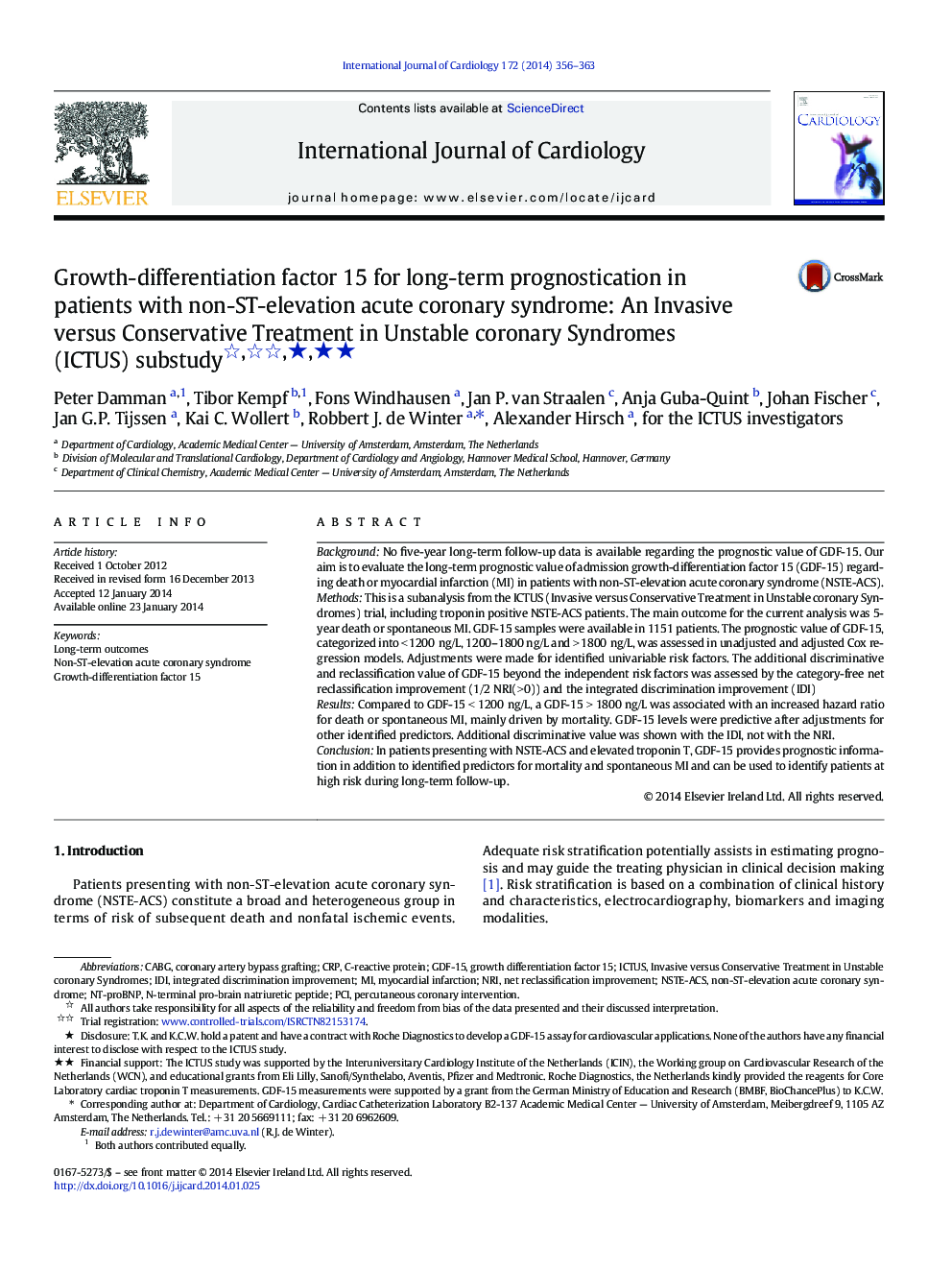| Article ID | Journal | Published Year | Pages | File Type |
|---|---|---|---|---|
| 5972020 | International Journal of Cardiology | 2014 | 8 Pages |
BackgroundNo five-year long-term follow-up data is available regarding the prognostic value of GDF-15. Our aim is to evaluate the long-term prognostic value of admission growth-differentiation factor 15 (GDF-15) regarding death or myocardial infarction (MI) in patients with non-ST-elevation acute coronary syndrome (NSTE-ACS).MethodsThis is a subanalysis from the ICTUS (Invasive versus Conservative Treatment in Unstable coronary Syndromes) trial, including troponin positive NSTE-ACS patients. The main outcome for the current analysis was 5-year death or spontaneous MI. GDF-15 samples were available in 1151 patients. The prognostic value of GDF-15, categorized into <Â 1200Â ng/L, 1200-1800Â ng/L and >Â 1800Â ng/L, was assessed in unadjusted and adjusted Cox regression models. Adjustments were made for identified univariable risk factors. The additional discriminative and reclassification value of GDF-15 beyond the independent risk factors was assessed by the category-free net reclassification improvement (1/2 NRI(>Â 0)) and the integrated discrimination improvement (IDI)ResultsCompared to GDF-15Â <Â 1200Â ng/L, a GDF-15Â >Â 1800Â ng/L was associated with an increased hazard ratio for death or spontaneous MI, mainly driven by mortality. GDF-15 levels were predictive after adjustments for other identified predictors. Additional discriminative value was shown with the IDI, not with the NRI.ConclusionIn patients presenting with NSTE-ACS and elevated troponin T, GDF-15 provides prognostic information in addition to identified predictors for mortality and spontaneous MI and can be used to identify patients at high risk during long-term follow-up.
